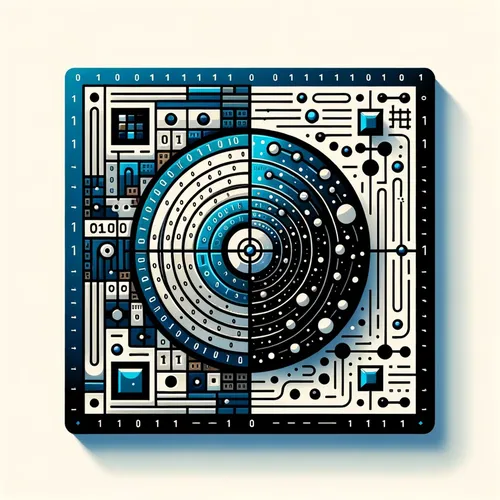Quantum Computing's New Era: Uniting Classical and Quantum with ORNL's Modular Software Stack
- Author
- Quiet. Please
- Published
- Wed 03 Sep 2025
- Episode Link
- https://www.spreaker.com/episode/quantum-computing-s-new-era-uniting-classical-and-quantum-with-ornl-s-modular-software-stack--67618268
This is your Quantum Bits: Beginner's Guide podcast.
I’m Leo, your Learning Enhanced Operator, and I’ve barely slept this week—because quantum programming just vaulted into a new era. Picture this: a quiet, humming white lab at Oak Ridge National Laboratory, lights flickering over racks of machines, as teams rolled out a software framework poised to *unite quantum and classical computing* at last. If you blinked, you missed it, but let me walk you right to the edge of this seismic shift and peer over together.
This isn’t another incremental update. We’ve struggled for years with a tangled forest of programming languages, each tailored to specific quantum hardware—trapped ions, superconducting circuits, even photonics. You might recall the days when programming a quantum algorithm felt like wrangling ancient dialects for rival roman emperors. But this week, ORNL’s new blueprint for a modular, unified software stack changed everything.
Let me show you what that means on the ground. For the first time, programmers can write hybrid quantum-classical applications, seamlessly shifting workloads from an exascale supercomputer like Frontier to a quantum processor—without rewriting their code for the quirks of each machine. Hardware complexity melts into the background. The code adapts as new hardware arrives. It’s like calling a global peace treaty among hardware vendors, orchestrated with mathematical grace. Amir Shehata and Tom Beck at ORNL led the charge, launching a flexible interface that lets you focus on solving real problems—simulating molecules, optimizing supply chains, or modeling the very forces that shape weather.
Dramatic? Absolutely. Suddenly, stumbling blocks that have haunted us—hardware errors, code obsolescence—are less daunting. You can switch between technologies as easily as swapping out musical instruments in a symphony, and your composition still sings. The analogy feels apt this week, with the global research community acting more like a jazz ensemble than a collection of soloists. Europe, Japan, and China are each racing on similar blueprints, chasing a future where quantum advantage won’t belong to any one continent or design alone.
Stepping back, you may have seen headlines about Wall Street’s quantum portfolio optimizers or the recent leap in quantum memory lifetimes at Caltech’s labs. But without frameworks like ORNL’s, these remain siloed marvels. Imagine if every city used a different volt for its electricity—it’s hard to build a skyscraper on that. Unifying the stack means we’re finally constructing the quantum “grid”—foundational, future-proof, and ready for whatever triumph hardware brings next.
To me, the surge in progress echoes what’s happening in politics and business right now. As leaders scramble to align on climate or digital privacy, quantum computing’s new cooperative spirit says: let’s build systems designed for change, not rigidity. The ultimate achievement here isn’t just code, but adaptability. We’re not just writing programs; we’re scripting the architecture for knowledge itself.
Thank you for letting me share this quantum leap with you. If you’re bursting with questions, or have a topic you want unraveled on air, email me at [email protected]. And don’t forget to subscribe to Quantum Bits: Beginner's Guide, wherever you get your podcasts. This has been a Quiet Please Production—visit quiet please dot AI for more. Until next time, keep your mind in superposition.
For more http://www.quietplease.ai
Get the best deals https://amzn.to/3ODvOta
